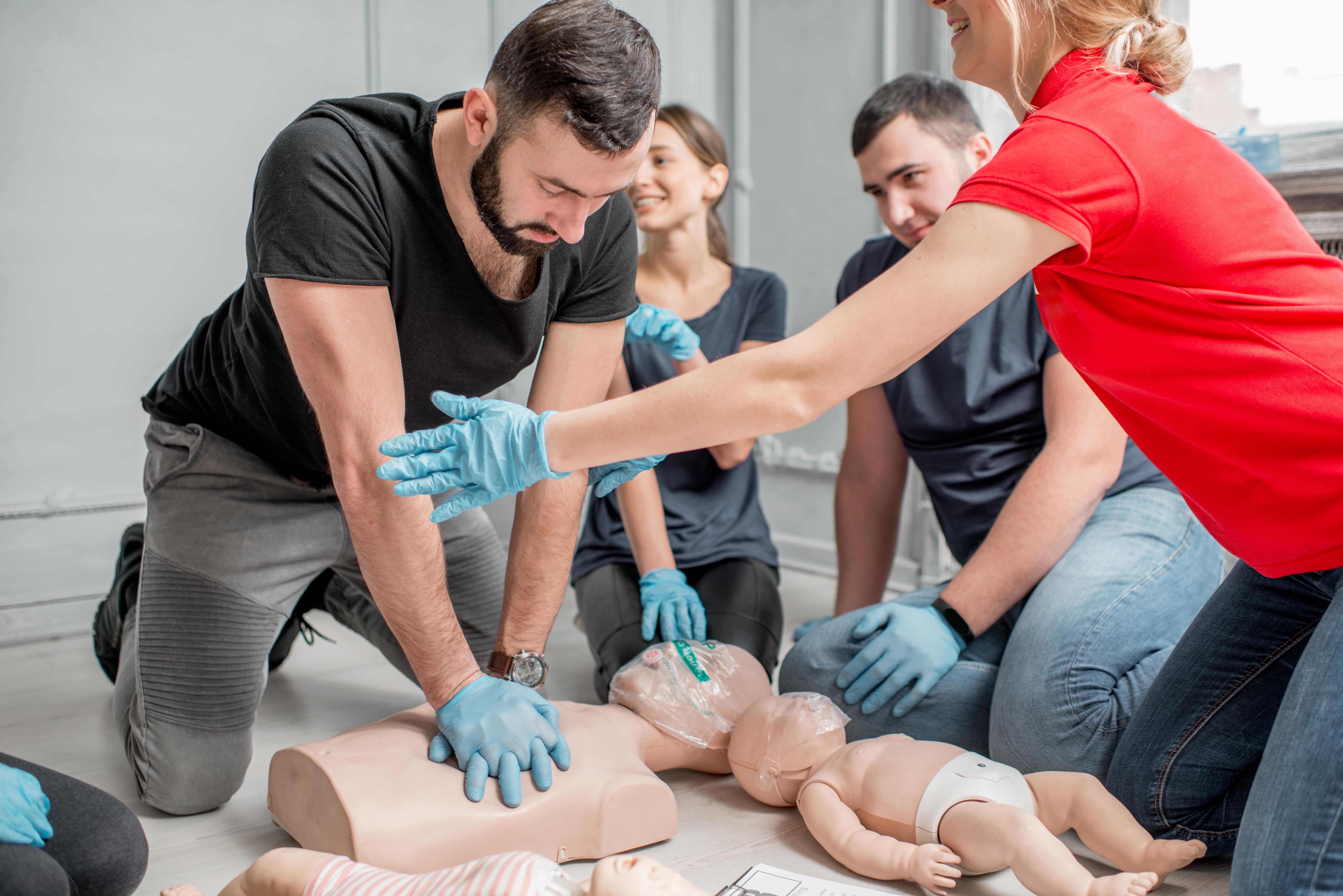Introduction
In today's fast-paced workplace, safety and security is critical. Organizations are increasingly identifying the importance of developing a risk-free room for workers. Among one of the most important elements of office security training is initial aid and CPR (Cardiopulmonary Resuscitation) programs. These training courses not only empower workers with essential life-saving skills but also foster a culture of security within the organization. In this post, we will certainly look into the myriad reasons that workplace security training should include emergency treatment and CPR programs, emphasizing their value in boosting office safety.
Why Office Safety Training Should Consist Of First Aid and Mouth-to-mouth Resuscitation Courses
The assimilation of first aid and CPR programs right into workplace security training has significant advantages. They furnish staff members with the knowledge and abilities necessary to respond effectively to medical emergencies, lower recovery time for hurt individuals, and possibly save lives. Furthermore, having trained employees on-site can instill self-confidence amongst workers and guarantee them that their well-being is prioritized.
Understanding Initial Aid
First aid describes the immediate care supplied to a specific struggling with a small or severe disease or injury up until expert medical aid gets here. Understanding fundamental emergency treatment concepts can make a significant difference in emergency situations.
Key Elements of First Aid
Assessment: The capability to examine a situation rapidly can help determine the appropriate actions needed. Stabilization: Recognizing how to stabilize an injured individual protects against more harm. Communication: Efficiently interacting with emergency services is vital for timely assistance.The Importance of CPR
CPR is a life-saving strategy used in emergencies when a person's heartbeat or breathing has stopped. It entails chest compressions and rescue breaths to preserve blood flow and oxygenation up until expert aid arrives.
How CPR Works
- Chest Compressions: These help circulate blood throughout the body. Rescue Breaths: These offer oxygen to the lungs.
Benefits of Emergency treatment and Mouth-to-mouth Resuscitation Certification
Obtaining a first aid certificate or completing mouth-to-mouth resuscitation programs comes with many advantages, both for people and organizations.
Enhanced Employee Confidence: Employees really feel much more protected recognizing they possess life-saving skills. Reduced Healing Time: Quick reaction through first aid can result in better results for hurt individuals. Compliance with Regulations: Many markets call for qualified employees as part of their health and safety regulations.Creating a Society of Safety And Security Via Training
Implementing first aid and CPR training promotes a culture that focuses on worker health.
Encouraging Teamwork
Training sessions usually involve team-building exercises that enhance partnership amongst employees.
Building Depend on Between Staff members and Management
When monitoring invests in worker training, it reveals commitment to their health and wellness, leading to boosted Mackay First Aid Course Near Me morale.
First Aid Courses vs. CPR Courses: What's the Difference?
While both kinds of programs are necessary, they focus on various skill sets.
First Aid Courses
These programs cover a large range of subjects beyond simply heart emergencies, consisting of:
- Wound care Burns Choking
CPR Courses
CPR programs especially concentrate on strategies related to heart attack situations, stressing:
- Adult CPR Child/ infant resuscitation Use of an Automated External Defibrillator (AED)
Choosing the Right Training Provider
Not all training suppliers are created equivalent; therefore, picking one that satisfies your company's needs is critical.
Accreditation Matters
Ensure that your chosen company uses recognized programs acknowledged by relevant authorities.
Instructor Experience
Consider instructors' credentials; experienced fitness instructors usually supply richer knowing experiences via real-world examples.

Incorporating Emergency treatment into Work Environment Safety Policies
Organizations ought to incorporate first aid needs into their broader safety plans for thorough coverage.

Regular Training Updates
Conducting normal correspondence course ensures that knowledge stays present amongst employees.

Creating Emergency Feedback Plans
Having clear plans in position can assist qualified personnel throughout emergencies.
Legal Ramifications of Emergency treatment Training in the Workplace
Employers have legal duties relating to office safety and security; applying emergency treatment training can help minimize risks connected with non-compliance.
Negligence Claims
Failure to supply appropriate training may leave employers at risk to suits if an incident occurs due to absence of preparedness.
FAQ Section
What is included in a common emergency treatment course?- A typical emergency treatment course consists of instruction on analyzing injuries, treating wounds, taking care of burns, handling choking cases, and executing mouth-to-mouth resuscitation if necessary.
- Most mouth-to-mouth resuscitation programs last between 4-- 6 hours relying on whether it's fundamental or advanced training.
- While not constantly legally mandated, having actually licensed personnel can substantially improve work environment safety and security standards.
- Many accredited organizations use online renewal options for first aid certificates which include evaluations using video conferencing.
- Yes, sectors such as building, medical care, education and learning, and production commonly have regulatory demands necessitating qualified employees on site.
- It's suggested that staff members join correspondence course every two years or quicker if there are considerable changes in treatments or regulations.
Conclusion
To summarize, integrating first aid and mouth-to-mouth resuscitation right into work environment security training is not just an option but a necessity in today's work environments where emergencies can occur at any moment. Organizations advantage profoundly from having actually educated personnel all set to react successfully during situations while fostering an atmosphere where staff member health takes priority over all else. As a result, it becomes obvious why work environment safety training must consist of first aid and mouth-to-mouth resuscitation courses-- they conserve lives while advertising an aggressive technique toward health and wellness criteria within companies throughout various sectors.
By focusing on such vital training initiatives-- first aid certifications acquired with reputable carriers together with practical hands-on experience-- companies can significantly enhance their general emergency situation readiness degrees while additionally developing more powerful teams with the ability of taking on any scenario head-on!